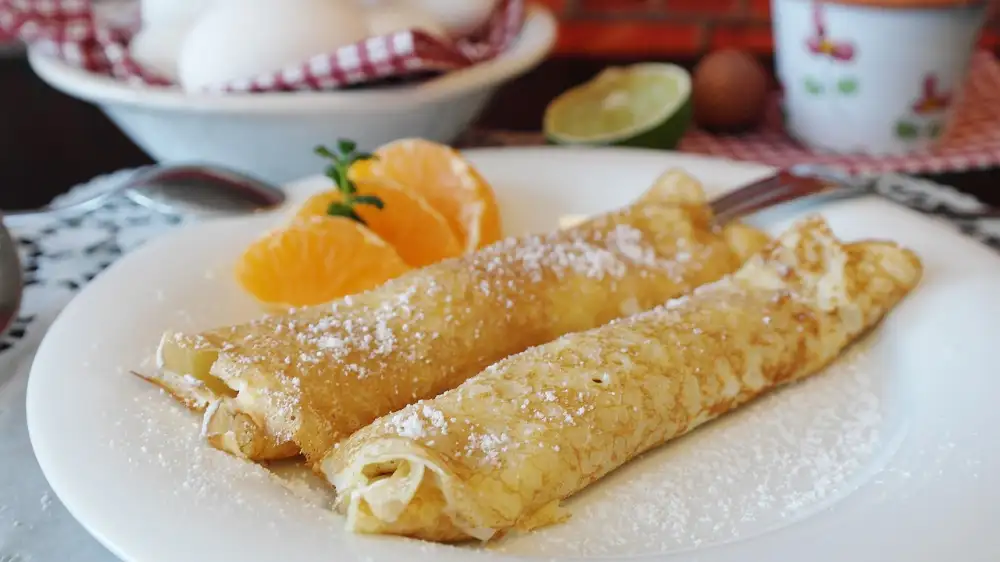Mastering the Perfect Roast Chicken: Discover the Optimal Cooking Time for Juicy Results

- Factors affecting roast chicken cooking time
- Size and weight of the chicken
- Oven temperature
- Stuffing or trussing the chicken
- Recommended cooking time for roast chicken
- General guidelines based on weight
- Using a meat thermometer for accuracy
- Adjusting cooking time for different oven temperatures
- Higher temperature for crispy skin
- Lower temperature for slow cooking and tenderness
- Tips for achieving a perfectly cooked roast chicken
- Preheating the oven
- Allowing the chicken to rest before carving
- Checking for doneness using visual cues
Cooking the perfect roast chicken is a culinary skill that many aspire to master. The key to achieving juicy, tender meat lies in understanding the importance of cooking time. Cooking a chicken for too long can result in dry, overcooked meat, while undercooking can lead to unsafe consumption. By determining the optimal cooking time, you can ensure a delicious and satisfying meal for yourself and your guests. In this article, we will explore the factors that affect roast chicken cooking time and provide recommendations for achieving the perfect results every time.
Factors affecting roast chicken cooking time
Factors affecting roast chicken cooking time include the size and weight of the chicken, oven temperature, and whether or not the chicken is stuffed or trussed. The size and weight of the chicken will determine how long it needs to cook to reach a safe internal temperature. Oven temperature also plays a role, as higher temperatures will cook the chicken faster while lower temperatures will result in slower cooking. Stuffing or trussing the chicken can also affect cooking time as it may slow down heat penetration. It's important to consider these factors when determining the optimal cooking time for a juicy and delicious roast chicken.
Size and weight of the chicken
The size and weight of the chicken play a crucial role in determining the cooking time. A larger chicken will require more time to cook thoroughly, while a smaller one will cook faster. As a general rule, for every pound of chicken, you should allow approximately 20 minutes of cooking time. However, it's important to note that this is just a guideline and other factors such as oven temperature and stuffing can also affect the cooking time.
Oven temperature
b. Oven temperature: The temperature at which you cook your roast chicken plays a crucial role in determining the cooking time and the final result. A higher oven temperature, around 425°F (220°C), is ideal for achieving crispy skin. This high heat helps to render the fat and create that desirable golden-brown crust. However, it's important to monitor the chicken closely to prevent it from drying out.
On the other hand, if you prefer a slower cooking method for a more tender and juicy chicken, you can lower the oven temperature to around 350°F (175°C). This lower heat allows the chicken to cook more evenly and retain its moisture. Keep in mind that this method may require a longer cooking time, so be patient and use a meat thermometer to ensure it reaches the safe internal temperature of 165°F (74°C).
Experimenting with different oven temperatures can help you achieve your desired texture and flavor. Just remember to adjust your cooking time accordingly and always prioritize food safety by using a meat thermometer to ensure your roast chicken is cooked thoroughly.
Stuffing or trussing the chicken
Stuffing or trussing the chicken can also affect the cooking time. When you stuff the chicken with ingredients like bread, vegetables, or herbs, it will take longer to cook as the stuffing needs to reach a safe internal temperature. Trussing the chicken, which involves tying the legs and wings together, helps to maintain its shape and promote even cooking. However, trussing can also increase the cooking time slightly. So, if you choose to stuff or truss your chicken, be sure to adjust your cooking time accordingly for optimal results.
Recommended cooking time for roast chicken
Recommended cooking time for roast chicken can vary depending on the size and weight of the bird. As a general guideline, a 3-4 pound chicken should be roasted at 350°F for approximately 1.5 to 2 hours. For a larger chicken weighing around 5-7 pounds, increase the cooking time to about 2.5 to 3 hours. However, it is important to note that these times are just estimates and may need to be adjusted based on your specific oven and desired level of doneness. To ensure accuracy, it is highly recommended to use a meat thermometer inserted into the thickest part of the thigh without touching the bone. The internal temperature should reach 165°F for safe consumption.
General guidelines based on weight
When it comes to cooking a roast chicken, the weight of the bird plays a significant role in determining the cooking time. As a general rule, you should allow for approximately 20 minutes of cooking time per pound (or 45 minutes per kilogram) of chicken. For example, a 4-pound chicken would require around 80 minutes of cooking time at an average oven temperature of 350°F (175°C). However, it's important to note that these are just rough estimates and may vary depending on other factors such as oven temperature and desired level of doneness. To ensure accuracy, it is always recommended to use a meat thermometer to check the internal temperature of the chicken.
Using a meat thermometer for accuracy
Using a meat thermometer is the most accurate way to determine the doneness of your roast chicken. Insert the thermometer into the thickest part of the chicken, avoiding contact with bones. The internal temperature should reach 165°F (74°C) for safe consumption. This ensures that the chicken is cooked through without overcooking, resulting in juicy and tender meat. Remember to clean and sanitize your thermometer after each use to prevent cross-contamination.
Adjusting cooking time for different oven temperatures
Adjusting cooking time for different oven temperatures is crucial in achieving the perfect roast chicken. Higher oven temperatures, around 425°F (220°C), are ideal for creating a crispy skin. This high heat helps to render the fat and create a delicious golden crust. However, it's important to monitor the chicken closely to prevent overcooking and drying out the meat.
On the other hand, lower oven temperatures, around 325°F (160°C), are best for slow cooking and ensuring tenderness. This gentle heat allows the chicken to cook evenly and retain its moisture, resulting in juicy and succulent meat. Keep in mind that cooking times will be longer at lower temperatures, so be patient and use a meat thermometer to ensure doneness.
Experiment with different oven temperatures to find your preferred balance between crispy skin and tender meat. Remember to adjust cooking times accordingly and always keep an eye on your roast chicken as it cooks to achieve mouthwatering results.
Higher temperature for crispy skin
When it comes to achieving that coveted crispy skin on your roast chicken, a higher oven temperature is key. By starting off with a hotter oven, typically around 425°F (220°C), you can ensure that the skin becomes golden and deliciously crispy. The high heat helps to render the fat underneath the skin, resulting in a satisfying crunch when you take that first bite. Just be sure to monitor the cooking process closely to prevent the skin from burning. Remember, a higher temperature is not only for aesthetics but also adds texture and flavor to your roast chicken.
Lower temperature for slow cooking and tenderness
Cooking roast chicken at a lower temperature is a popular method for achieving tender and juicy results. By cooking the chicken slowly, the meat has more time to break down and become tender. This is especially beneficial for larger chickens or tougher cuts of meat. Lower temperatures also help to retain moisture, preventing the chicken from drying out during the cooking process. Aim for a temperature of around 325°F (160°C) and cook the chicken for a longer period of time, typically around 20 minutes per pound (450 grams). This slow cooking method allows the flavors to develop and ensures that every bite is succulent and flavorful.
Tips for achieving a perfectly cooked roast chicken
a. Preheating the oven: Always preheat your oven to the recommended temperature before placing the chicken inside. This ensures even cooking and helps to achieve a crispy skin.
b. Allowing the chicken to rest before carving: Once the chicken is cooked, resist the temptation to carve it immediately. Letting it rest for about 10-15 minutes allows the juices to redistribute, resulting in a more tender and juicy bird.
c. Checking for doneness using visual cues: To ensure your roast chicken is fully cooked, use visual cues such as golden brown skin and clear juices running from the thickest part of the thigh when pierced with a knife. This indicates that it is ready to be enjoyed.
By following these tips, you can master the art of roast chicken cooking time and create deliciously juicy and flavorful results every time.
Preheating the oven
Preheating the oven is a crucial step in achieving a perfectly cooked roast chicken. By preheating, you ensure that the oven reaches the desired temperature before placing the chicken inside. This allows for even cooking and helps to seal in the juices, resulting in a moist and flavorful bird. Preheating typically takes around 15-20 minutes, depending on your oven. It's important not to skip this step as it can greatly affect the overall cooking time and quality of your roast chicken. So be patient and give your oven the time it needs to heat up properly before beginning your culinary masterpiece.
Allowing the chicken to rest before carving
Allowing the chicken to rest before carving is a crucial step in achieving a perfectly cooked roast chicken. After removing the chicken from the oven, resist the temptation to immediately carve into it. Instead, let it rest for about 10-15 minutes. This resting period allows the juices to redistribute throughout the meat, resulting in a juicier and more flavorful bird. Additionally, during this time, the internal temperature of the chicken continues to rise slightly, ensuring that it is cooked evenly throughout. So be patient and give your roast chicken some time to rest before serving for optimal taste and texture.
Checking for doneness using visual cues
Checking for doneness using visual cues is an essential skill in mastering the perfect roast chicken. One of the most reliable indicators is the color of the chicken's juices. When the chicken is fully cooked, the juices should run clear, not pink or red. Additionally, the skin should be golden brown and crispy, indicating that it has been properly roasted. Another visual cue is the internal temperature of the chicken; it should reach 165°F (75°C) in the thickest part of the thigh. By paying attention to these visual cues, you can ensure that your roast chicken is cooked to perfection every time.
In conclusion, mastering the art of roast chicken cooking time is essential for achieving delicious results. By understanding the factors that affect cooking time, such as the size and weight of the chicken, oven temperature, and whether or not it is stuffed or trussed, you can ensure that your roast chicken is cooked to perfection. Following recommended cooking times based on weight and using a meat thermometer for accuracy will further enhance your culinary skills. Additionally, adjusting the cooking time according to oven temperature will allow you to achieve crispy skin or slow-cooked tenderness. Remember to preheat the oven, allow the chicken to rest before carving, and check for doneness using visual cues. With these tips in mind, you'll be able to serve up a juicy and flavorful roast chicken every time.
Published: 27. 11. 2023
Category: Food



